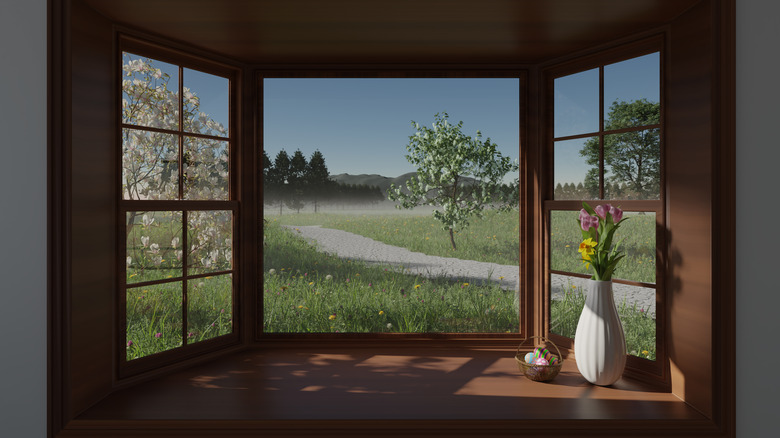The Difference Between Solstice And Equinox Explained
Years on Earth are divided into four seasons, each marked by a solstice or an equinox. In the mild seasons of spring and autumn, you have equinoxes, so named because they mark the period of time in which day and night are equally long (per Britannica). It's a combination of the Latin word aequus, meaning equal, and nox, meaning night, according to Merriam-Webster. In the Northern Hemisphere, the vernal (that is, spring) equinox occurs around March 21, and the autumnal equinox occurs around September 23. Both mark the first days of their respective seasons.
Solstices, on the other hand, occur during the seasons of climate extremes: summer and winter. During the summer solstice, the day is at its longest point, and during the winter solstice, the day is at its shortest point. Again, the solstices mark the start of their respective seasons, with the summer solstice occurring on June 20 or 21 and the winter solstice occurring on December 20 or 21 (in the Southern Hemisphere, the seasons are switched).
But why do they occur at all?
Without solstices and equinoxes, we might not exist
Seasons are not caused by how far the sun is from earth — after all, if this were the cause, seasons would not be flipped for the Northern and Southern Hemispheres. In fact, the earth is closest to the sun in early January (per Space).
Seasons are instead caused by Earth's slight and constant tilt, according to NASA. In the Northern Hemisphere's winter, it is tilted away from the sun, while the Southern Hemisphere is tilted toward it. This means that the southern hemisphere gets longer and more direct heat and light from the sun, resulting in summer for the Southern Hemisphere and winter for the Northern Hemisphere. This also affects the length of the days, with days in summer lasting longer than days in winter.
Earth's tilt is thought to have been caused by a collision with another planet during the early days of the solar system, according to NASA. Not only did this collision create Earth's seasons, a chunk of Earth that broke off eventually formed Earth's moon. Both of these traits of Earth are so important that some scientists believe both a large moon (via ICR) and a slight tilt (via NASA) are needed for planets to give rise to complex life. By this theory, our existence is literally dependent on solstices and equinoxes.

